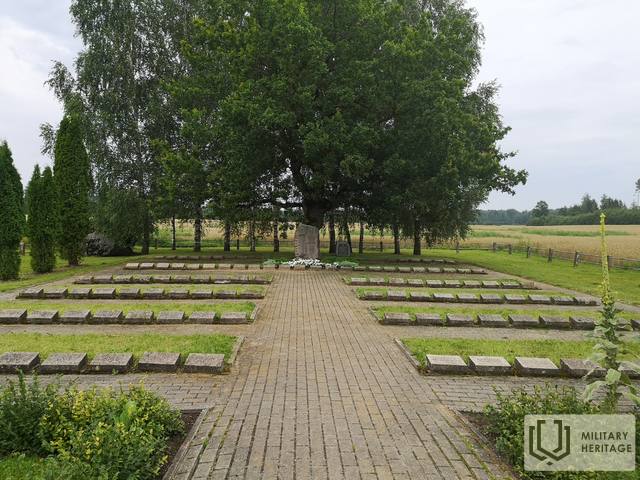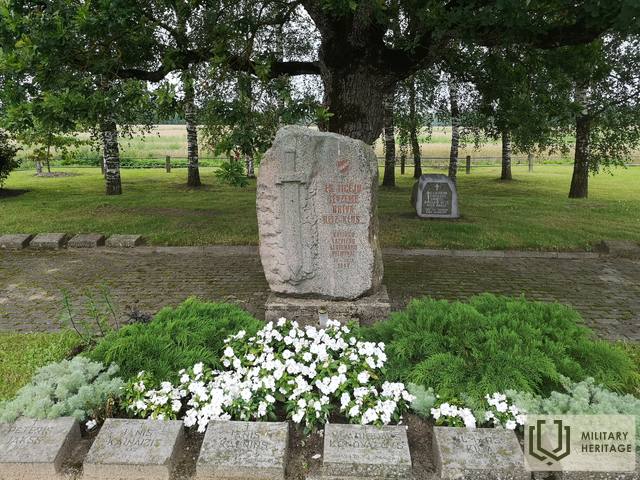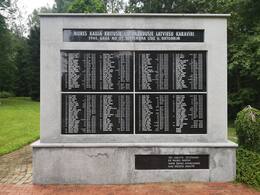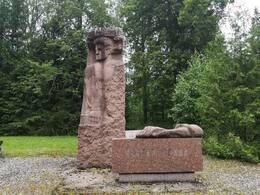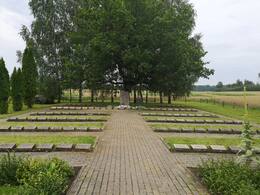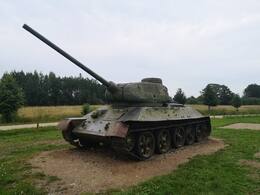Neatpažinti kareiviai. Kovos karininko istorija.
Morės mūšis – tai Antrojo pasaulinio karo paskutiniojo etapo epizodas, turėjęs didelę reikšmę tolesnei karo eigai Latvijos teritorijoje. Morės mūšis – tai karo veiksmai, vykę nuo 1944 m. rugsėjo 25 d. iki spalio 5 d. Siguldos gynybos linijoje, Morės valsčiaus teritorijoje. Maždaug 12 km ilgio Siguldos gynybos linijos apkasuose Latvijos legiono 19-osios divizijos kariai, 10 dienų kovoję sunkiuose mūšiuose, turėdami 10–15 kartų didesnę priešo persvarą, sustabdė Raudonosios/Sovietų armijos dalinių puolimą Rygos link.
„2001 m. liepą Mori mieste lankėsi Bundesvero majoras ir jo palyda. Pagrindinis susidomėjimas buvo Antrojo pasaulinio karo taktika. Remiantis karine istorija, viena garsiausių Rusijos divizijų, vadovaujama generolo Šatilovo, Mori mieste puolė 19-ąją Latvijos grenadierių diviziją. Šios divizijos kariai buvo labai gerai apmokyti ir naudojo vokiečių puolimo taktiką. Mori mieste jie buvo nugalėti, ir tai sukėlė vokiečių susidomėjimą. Pagrindiniai aptarti klausimai buvo būtent kovos taktika. Būdami vokiečių karininkais, jie apie kai kuriuos aspektus išgirdo pirmą kartą, o tai reiškia, kad jie daug prarado iš Antrojo pasaulinio karo. Pavyzdžiui, tai, kad Mori mūšio metu kuopos vadovavimo punktas tradiciškai nebuvo išdėstytas pirmoje kovos linijoje, kaip moko vokiečių mokykla, jiems buvo naujiena. Prieštankiniai pabūklai pasiteisino kaip gynybinis ginklas, būdami pirmoje kovos linijoje. Rusai puolime naudojo prieštankinius ginklus, įtraukdami juos į pirmąjį ešeloną, tačiau vokiečiai... „Pajėgos šį taktinį sprendimą naudojo nuo pat karo pradžios. Jiems tai nebuvo nieko naujo.“ Morius taip pat lankydavo Antrojo pasaulinio karo dalyviai – generolo Steinerio tankų korpuso, tankų divizijos „Wiking“, tankų grenadierių divizijos „Gotz von Berlichingen“ ir kiti vyrai. Ir visada buvo domimasi taktiniais klausimais.
Rolandas Konvtunenko „Neapdainuoti kareiviai. Karininko istorija“. R: Aplis. 2004.
Susijusi laiko juosta
Susijusios vietos
Moreso mūšio memorialinis parkas
Parkas buvo įkurtas buvusioje mūšio vietoje Morės parapijos centre, kur per pirmąsias dvi 1944 m. Antrojo pasaulinio karo savaites vyko dideli mūšiai, išlaikant strategiškai suformuotą gynybos liniją ir neleisdami Raudonajai armijai prasiveržti į Rygą, taip paveikdami tolesnę istorijos eigą.
Čia galite pamatyti karo laikų relikvijų fragmentus ir bunkerių vietas. Morės mūšių memorialiniame parke yra skulptoriaus H. Sprincio sukurtas atminimo akmuo ir atminimo lenta su 186 karių vardais, iškaltais granite.
Raudonosios armijos brolių kapinės More mieste
Raudonosios armijos karinės kapinės yra pagrindinio kelio per Morę pakraštyje. Jose palaidoti apie 2000 karių, žuvusių per Morės mūšį. 1974 m. kapinės buvo sutvarkytos ir atidengtas skulptoriaus B. Grīslės paminklas.
More mūšių muziejus
Muziejus yra Morėje, V319 greitkelio pakraštyje. Jis skirtas 1944 m. rudenį vykusiems Morės mūšiams tarp Raudonosios armijos ir Vokietijos armijos Latvijos legiono. Parodoje eksponuojamas mūšio lauko maketas, ginklai, apdovanojimai, karių uniformos ir karinė įranga. Morės mūšių muziejų ir memorialinį parką įkūrė buvę Latvijos legiono kariai, dalyvavę Morės mūšiuose. Memorialiniame parke yra apkasų, žeminių ir mūšio laukų. Mūšiai Morės apylinkėse buvo tik dalis didelio masto Raudonosios armijos Baltijos puolimo operacijos, kurioje dalyvavo iš viso 900 000 karių ir daug karinės technikos vienetų. Morės apylinkėse buvo įrengta dalis Vokietijos armijos įtvirtinimų sistemos, kurioje Latvijos legionieriai sutrukdė Raudonajai armijai prasiveržti į Rygą. Tai leido Vokietijos armijai išvesti savo pajėgas iš Estijos ir išvengti pralaimėjimo. Raudonosios armijos vadovybė tikėjosi, kad priešo pasipriešinimas netoli Morės bus trumpalaikis, ir atkakliai tęsė nepasiruoštus ir nekoordinuotus puolimus, patirdama didelių nuostolių. Vietos pranašumai ir Latvijos legionierių koviniai pajėgumai suvaidino svarbų vaidmenį tolesnėje karo eigoje. More yra Latvijos legionierių brolių kapinės ir Raudonosios armijos karių kapinės.




